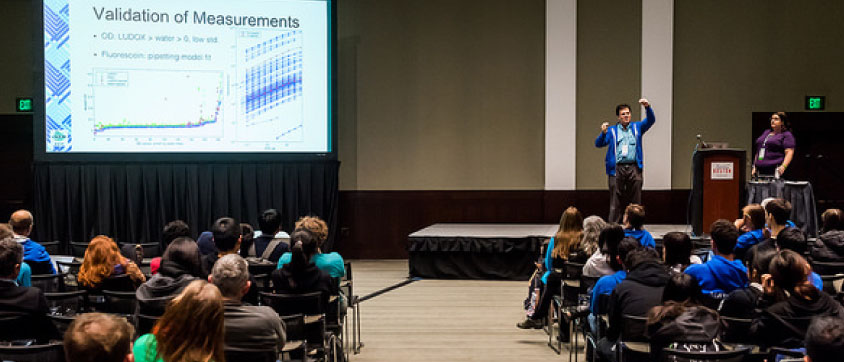Measurement Introduction
"Measurement is fundamentally an act of communication."
— Jacob Beal, Measurement Committee Chair


The public standard meter by Chalgrin located at 36, rue de Vaugirard, Paris, France. Image from Wikimedia Commons.
Designing a successful iGEM project requires careful thought about what you are going to measure, how the measurements will be made, and where the measured values will be used. At iGEM, we believe that good measurements are the foundation on which scientific progress and societal impact are built.
The measurements each iGEM team chooses to take are at the heart of how they communicate the results of their work. In doing so, they engage creatively with issues relating (but not limited) to instrumentation, assay methods, experimental design, reproducibility, modeling, and prediction. The challenges of measurement can be complex, but they are foundational to the conduct of science and engineering. A careful approach to measurement helps teams succeed in their goals, and helps their work have impact on the iGEM community, throughout synthetic biology, and in the world at large.
Measurement begins in the design of a team’s project, guides decisions as the project is executed, produces the results of a project to be communicated, and allows others inside iGEM and throughout the world to more effectively build on the project in the future. Teams also engage in a wide variety of other measurement activities, including collaborating to test reproducibility, design new and better assays, and create low-cost instruments to make measurement more accessible.
The measurement aspect of a project is also an opportunity for team members to explore the twin questions of knowledge at the heart of science and engineering. How do we know what we know? How can we predict what will happen when we create something new? We must grapple with these questions if we wish to make responsible choices both as individuals and as a society, and the work done by iGEM teams is one of the many components of that effort.
Questions you might consider:
- How might you get feedback on the viability and reproducibility of your approach? How will you incorporate this feedback into your project design and execution?
- Which types of measurements are needed to validate your project? Are the instruments you have access to sufficient, and if not, how might you change your assay design?
- What is the effective range of measurement on your instruments, and how will you distinguish true signals from noise, artifacts, and confirmation bias?
- What are the physical units of your measurements, and how can they be calibrated to an independent standard?
- What sort of controls can you use to determine whether your experimental protocols are working correctly?
- How can your measurements be used in the design of other systems?



